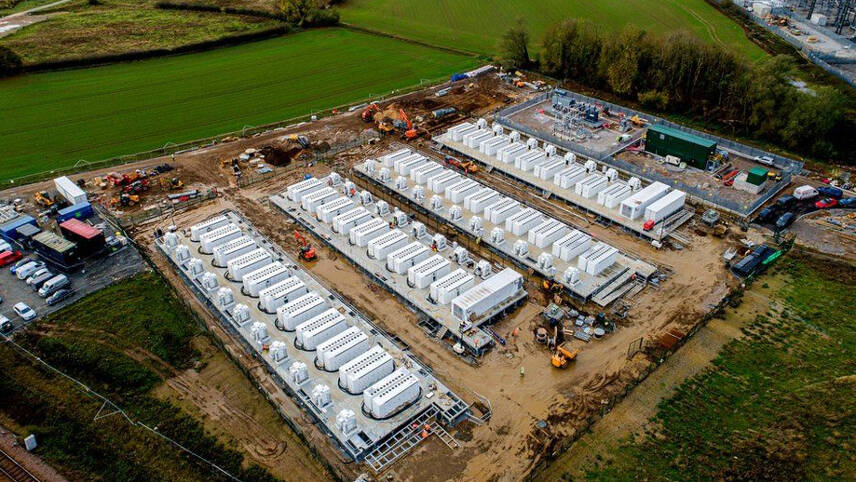Register for free and continue reading
Join our growing army of changemakers and get unlimited access to our premium content

The battery facility can store enough electricity to power 300,000 homes for two hours. Image: Harmony Energy
Harmony Energy confirmed on Monday (21 November) that the Pillswood project had been successfully operationalized. The facility is 98MW/ 196MWh.
It is located in the village of Cottingham, adjacent to the National Grid’s electricity substation at Creyde Beck. Construction has been managed by Tesla, whose Megapack battery products make up the array.
The substation where Pillswood is based is the proposed connection point for the first two phases of the Dogger Bank wind farm. This facility will be the world’s largest offshore wind farm once completed, at 3.6GW. It will consist of three 1.2GW phases and the first is set to come online in 2023.
The battery storage facility will be crucial to maximizing the efficiency of Dogger Bank. Due to the intermittent nature of renewable electricity, it is beneficial to be able to store electricity in case supply is low at times of high demand. Similarly, there may be high supply at times of low demand, forcing the curtailment of energy.
Originally, half of the Pillswood project’s capacity was set to become operational this side of the new year, with the other half due to come online in March 2023. The timetable has been accelerated on National Grid’s request, to help build in more energy security and flexibility this winter amid record-high wholesale energy prices.
Harmony Energy’s director Perer Kavanagh said that “all stakeholders have recognised the importance of achieving energisation for this project ahead of winter” despite “a very challenging geopolitical and global supply chain environment”.
Kavanagh added: “Battery energy storage systems are essential to unlocking the full potential of renewable energy in the UK, and we hope this particular one highlights Yorkshire as a leader in green energy solutions.
“These projects are not supported by taxpayer subsidy and will play a major role in contributing to the net-zero transition, as well as ensuring the future security of the UK’s energy supply and reduced reliance on foreign gas imports.”
A rapidly growing sector
Harmony Energy is planning to bring five other utility-scale battery energy storage projects online within the next year.
It is far from the only company looking to scale its battery storage portfolio in the UK. Back in April, trade body RenewableUK revealed that the UK’s energy storage pipeline had doubled within less than a year, surpassing 32GW.
The UK Government’s Energy Security Strategy, published in April, is headlined with an ambition for 95% of the UK’s electricity generation to be low-carbon by 2030. Unabated fossil-fuelled electricity generation should then come offline by 2035. The Conservative Party’s approach prioritises growing nuclear and offshore wind to meet these goals.
RenewableUK believes that, as well as the UK Government’s increased support for renewable electricity in the main, the growth of the energy storage pipeline is attributable to a decision to relax planning rules, first announced in summer 2020 and enacted in December 2020. The change enabled local planning authorities to make decisions on larger projects, lifting the previous 50MW cap for England and the previous 250MW cap for Wales, after which point Government intervention was previously needed.
We are expecting further major policy changes to be made to support long-duration, large-scale energy storage by 2024. These changes will primarily impact technologies which don’t rely on batteries, such as pumped hydro.


At 196MWHr, it is 0.163 times the size of Dogger Bank (196/1200=0.1633.) So it can take/replace 9.8 minutes of Dogger Bank phase 1’s output (taking 2 hours to do so at 98 MW).
Or, it can take/replace 8% of Dogger Bank 1’s output, or 2.7% of Dogger Bank’s full output.
It’s a great unit to have on the GB network, and can do a lot of good, but talking about it smoothing Dogger Bank is far fetched.